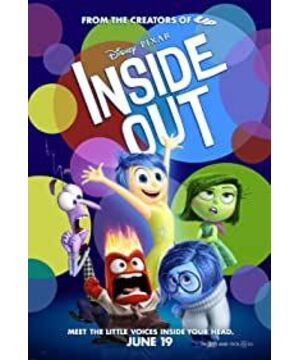This "Inside Out" was carefully crafted by Peter Docter, the director of "Flying House" for five years. brain circuits.
Emeryville, Calif. — In July 2012, John Lasseter walked into a dimly lit projection room at Pixar headquarters with a notepad in his hand and took his seat. Lasseter, chief creative officer at Pixar, was there to assess the progress of Inside Out. The new film is set inside the mind of an 11-year-old girl. Did the film's production team really understand this unusual idea?
At that time, the air quickly solidified. "We got up and said, 'We're not going to show you the movie, because the movie doesn't make sense,'" recalls Pete Docter. At that time, he moved to "Inside Out" after the Oscar-winning film "Up."
It was guts, because Docter's film had been in the works for more than two years at the time. "I saw John like this," Docter said, frowning and crossing his arms over his chest. "I was terrified. Very unhappy."
Resolving creative doubts is a hallmark of Pixar, and the film The studio may have done it again. "Inside Out," which has been completed and will hit theaters on June 19, is expected to be Pixar's 15th consecutive blockbuster. [Analysts predict that the film will gross at least $250 million (about 1.549 billion yuan) at the box office in the U.S. alone. ] The tragic film received an enthusiastic response from critics at this year's Cannes Film Festival and could be a force for this year's Oscars, and not just in the animated category.
But beyond money and awards, the success of Inside Out means more to Disney-owned Pixar. Its success will prove that despite some fan concerns, while some criticize Pixar for its brain drain and its growing reliance on series, the undeniable integrity of the soul that the tiny studio possesses. Last year, for the first time in nine years, Pixar didn't release a new film because "The Good Dinosaur" ran into trouble. (The director has changed, and the film will be released on Nov. 25.)
To make matters worse: Rival DreamWorks has struggled during Pixar's absence, leading to whispers that the computer animation genre has become start to shrink.
"The pressure on Inside Out was enormous," said Maija Burnett, director of the character animation program at Docter's alma mater, the California Institute of the Arts. This art form has very high expectations."
It's worth noting that Inside Out was the first Pixar original to come to fruition, almost entirely free of Steve Jobs' influence. Jobs, the founder of Pixar, was a powerful presence at the studio until his death in 2011. At the same time, Pixars will have to deal with Lasseter's diminished involvement, as his job in recent years has been to rescue the faltering Disney animation. [In 2013, he already achieved this goal with the film Frozen. ]
"Inside Out" tells the story of "Joy", "Fear", "Disgust", "Anger" and "Sadness". They control a little girl named Riley from a control center inside their brain, stepping up to keep her safe, entertain her, and defend justice—with the exception of the sleepy, clumsy "Sad" . Is she really bad for Riley?
The Riley family then moves to a new city, "Sad" and "Joy" (by Phyllis Smith and Amy Poehler in The Office, respectively). Dub] Lost in the deepest corners of Riley's mind. It was a world in a mirror of dancing cupcakes, a forest of French fries, and an imaginary Marshmallow friend who had fallen out of favor. The lost pair traveled through areas of "long-term memory" and "abstract thinking", hoping to return to the control room with "fear," "disgust," and "anger" [respectively by Bill Hader]. Hader, Mindy Kaling, and Lewis Black] presided over the big picture.
Stand back, because we end up with a wayward, puberty Riley.
Could it be that this is a cartoon where common sense tries to explain the state of mind of adolescence? Even for Pixar, that's a vague proposition. If it's too cartoony, adults may rebel; if it's too speculative, children may find it boring. (Insinuating disgust.)
So Inside Out might look superficially like a cartoon (those emotions, especially "joy", are stretched and covered in hilarious little bubbles; The bright, retro art is also designed to evoke memories of 1950s Broadway musicals), but it still wants to be in line with basic science. For example, scientists believe that short-term memory shifts to long-term memory during sleep; when Riley goes to bed, her memories (each represented by a small bead) roll through a series of chutes and Ramp, get handle machining.
Especially dealing with the plot, and finally with the growth of the child, it is no longer suitable to let one emotion control people's thinking. It is the interplay of all these emotions and that complexity that brings about the true connection between people. "This is also in line with China's traditional values. Only after crying can you be happy before you can know how to cherish. Crying is the sublimation of human emotions!!!
View more about Inside Out reviews











